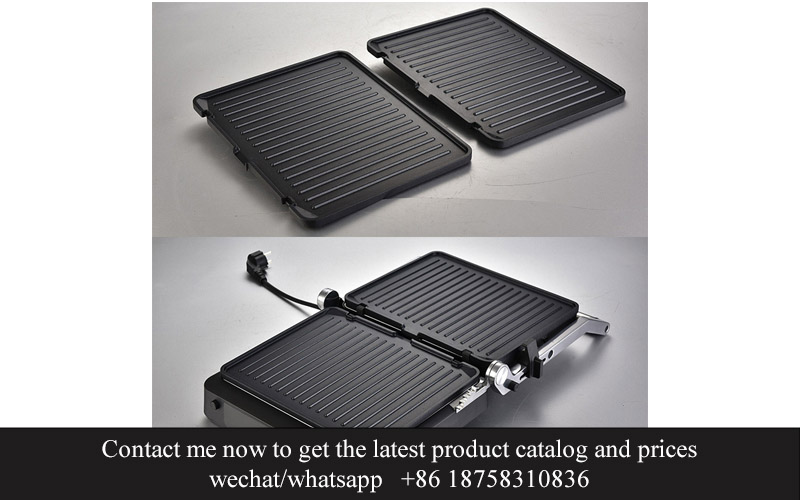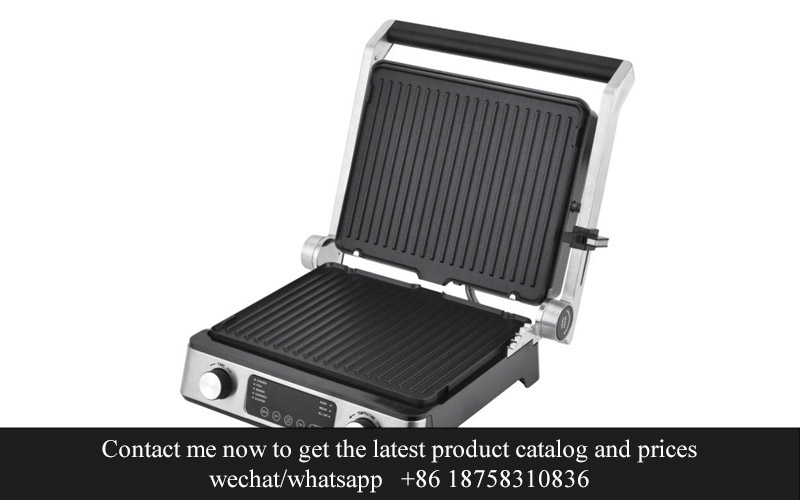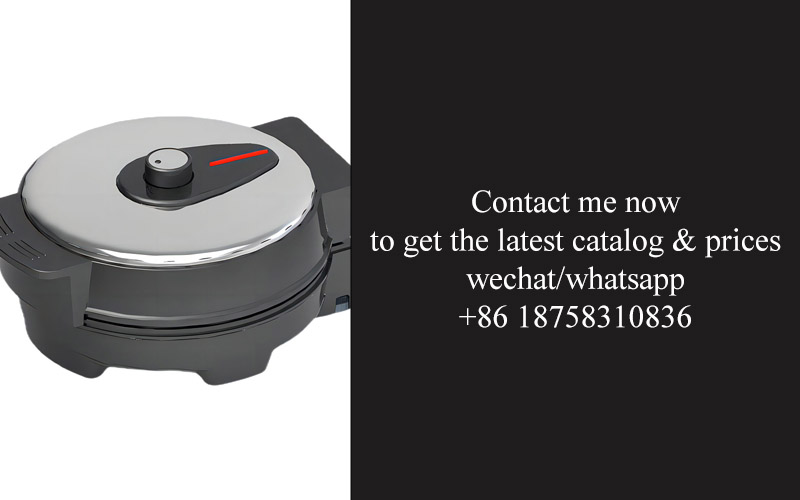Address
304 North Cardinal
St. Dorchester Center, MA 02124
Work Hours
Monday to Friday: 7AM - 7PM
Weekend: 10AM - 5PM
Address
304 North Cardinal
St. Dorchester Center, MA 02124
Work Hours
Monday to Friday: 7AM - 7PM
Weekend: 10AM - 5PM

Cookware has always been a cornerstone of culinary excellence, and with the advent of non-stick coatings, the kitchen has become a place of endless possibilities. As we delve into the world of cookware, it’s clear that innovation is the driving force behind the latest trends in technology. From the safety of LFGB compliant coatings to the rise of eco-friendly designs, the future of non-stick cookware is brimming with exciting advancements. Let’s explore the transformative journey of this indispensable kitchen staple.
Non-stick cookware has become an integral part of modern kitchens, offering convenience and ease of use that has revolutionized the way we cook. From its humble beginnings to the sophisticated products we see today, the journey of non-stick cookware is a testament to human ingenuity and a relentless pursuit of culinary perfection.
It all started in the 1930s when a French engineer named Marc Grégoire stumbled upon the concept of non-stick surfaces. While working on a new type of paint, he noticed that the paint had a peculiarly slippery texture. This discovery led to the development of the first non-stick coating, which was later named Teflon.
Teflon, a brand created by the DuPont Company, was introduced to the market in the 1950s and quickly gained popularity. The non-stick properties of Teflon meant that food didn’t stick to the pan, making cooking easier and cleaner. It was a game-changer for home cooks and professional chefs alike.
As the years went by, the technology behind non-stick coatings continued to evolve. The introduction of ceramic coatings in the late 1990s marked another significant milestone. These coatings were not only non-stick but also free from harmful chemicals like PFOA and PTFE, which were present in older Teflon coatings. Consumers were now able to enjoy the convenience of non-stick cookware without the health concerns.
The demand for eco-friendly and safe cookware led to the development of alternative materials. One such material is the LFGB compliant non-stick coating, which stands for “Liegenschaftsfrei, Gebrauchsgegenstände, Babyartikel.” This certification ensures that the cookware is free from harmful substances and is safe for use, especially when it comes to baby products.
The LFGB compliant non-stick coatings are not just about safety; they also offer excellent non-stick properties. These coatings are designed to be durable and long-lasting, ensuring that the cookware remains effective over time. They are also heat-resistant, allowing for a wide range of cooking techniques without the risk of damage.
Another innovation in non-stick cookware is the introduction of dimples or grooves on the cooking surface. These features are not just for aesthetics; they actually improve the non-stick properties by creating a more even distribution of heat and reducing the likelihood of food sticking.
Cookware manufacturers have also started to incorporate smart technology into non-stick cookware. Some pans now come with built-in temperature controls and smart sensors that help prevent overheating and burning. These advancements not only make cooking safer but also more enjoyable, as they take the guesswork out of the process.
The design of non-stick cookware has also seen significant changes. Modern non-stick pans are lighter and more ergonomic, making them easier to handle and maneuver. The handles are often designed to stay cool, even when the pan is on a hot stove, which is a crucial feature for safety and comfort.
As the market for non-stick cookware continues to grow, so does the competition. Brands are constantly striving to outdo each other with innovative features and superior performance. This competition has led to a wide array of options for consumers, each with its own unique selling points.
In conclusion, the evolution of non-stick cookware is a story of continuous improvement and innovation. From the early days of Teflon to the latest LFGB compliant coatings, non-stick cookware has come a long way. It has become an indispensable tool in the kitchen, making cooking more enjoyable and efficient for millions of people around the world.

Non-stick cookware has become an indispensable part of modern kitchens, offering convenience and ease of use. However, not all non-stick coatings are created equal. One of the most crucial factors to consider when purchasing non-stick cookware is LFGB compliance. This certification stands as a beacon of quality and safety, ensuring that the products meet stringent European standards.
The LFGB, or Lebensmittel- und Futtermittelbetrugsgesetz, is a German law that sets out the regulations for food and feed safety. It’s one of the most rigorous food safety standards in the world, and it’s widely recognized across Europe. For non-stick cookware, LFGB compliance means that the product has been tested and proven to be safe for food contact, free from harmful substances, and durable.
One of the primary reasons LFGB compliance is so important is the presence of perfluorooctanoic acid (PFOA) and polytetrafluoroethylene (PTFE), commonly known by the brand name Teflon. These chemicals were once widely used in non-stick coatings due to their exceptional non-stick properties. However, research has shown that PFOA can be harmful to human health and the environment, leading to a shift towards safer alternatives.
LFGB compliant non-stick coatings must undergo rigorous testing to ensure they do not contain PFOA or other harmful substances. This includes thorough chemical analyses and material testing to guarantee that the cookware is safe for everyday use. By adhering to these standards, manufacturers can offer consumers peace of mind, knowing that their cookware is not only non-stick but also safe for their health.
Another aspect of LFGB compliance is the durability of the non-stick coating. The coating must withstand high temperatures, repeated use, and cleaning without peeling or releasing harmful particles into the food. This is particularly important for those who prefer to cook at high temperatures or use metal utensils, as these can be harsh on non-stick surfaces.
The LFGB standard also addresses the migration of chemicals from the cookware into the food. This is crucial for maintaining the integrity of the food and ensuring that it is not contaminated with harmful substances. The test for chemical migration involves heating the cookware with water and then analyzing the water for any traces of the coating’s chemicals. If the levels are below the permissible limits set by the LFGB, the product is deemed compliant.
The certification process for LFGB compliance is not only about testing the non-stick coating but also the entire cookware product. This includes the materials used in the construction, the manufacturing process, and the final product’s design. This holistic approach ensures that every aspect of the cookware meets the high standards set by the LFGB.
For consumers, understanding LFGB compliance can be a game-changer. When shopping for non-stick cookware, looking for the LFGB mark is a straightforward way to ensure that the product is of high quality and safe to use. It’s a simple yet effective way to differentiate between products that may claim to be non-toxic but have not been tested to the same stringent standards.
Moreover, LFGB compliance is not just a mark of quality but also a testament to a manufacturer’s commitment to sustainability and environmental responsibility. By producing cookware that is safe for both the consumer and the planet, companies are taking a stand against the use of harmful chemicals and promoting a healthier future.
In conclusion, LFGB compliance is a critical aspect of non-stick cookware that consumers should not overlook. It represents a commitment to safety, quality, and environmental responsibility. By choosing LFGB compliant non-stick cookware, consumers can enjoy the convenience of non-stick cooking without compromising their health or the health of the environment.

The non-stick coating industry has seen a remarkable transformation over the years, with innovations that have revolutionized the way we cook. From the early days of Teflon to the latest advancements in coating technology, the rise of innovative non-stick coatings has been a game-changer for kitchen enthusiasts and professional chefs alike.
Once upon a time, the only option for non-stick cookware was Teflon, a brand that became synonymous with ease of cooking and effortless cleanup. However, as consumers became more health-conscious and aware of the potential risks associated with certain chemicals, the demand for safer alternatives grew. This shift in consumer preference paved the way for a surge in innovative non-stick coatings.
One such innovation is the use of ceramic coatings, which have gained popularity for their eco-friendliness and non-toxic properties. Unlike Teflon, which contains PFOA (perfluorooctanoic acid), a chemical linked to health concerns, ceramic coatings are free from harmful substances. They offer a natural, non-stick surface that is durable and can withstand high temperatures without releasing harmful fumes.
Another breakthrough in non-stick coating technology is the introduction of diamond coatings. These coatings are not only non-stick but also incredibly durable, outperforming traditional coatings in terms of scratch resistance and longevity. The diamond particles embedded in the coating create a hard, wear-resistant surface that can handle the rigors of everyday cooking.
The development of these innovative coatings has not only improved the performance of cookware but also expanded the range of materials used. While traditional non-stick coatings were limited to metal surfaces, modern ceramic and diamond coatings can be applied to a variety of materials, including glass, ceramic, and even stainless steel.
One of the most significant advancements in non-stick coatings is the use of nanotechnology. Nanocoatings are made up of particles that are 1 to 100 nanometers in size, which is about 1,000 times smaller than the width of a human hair. These tiny particles create a superhydrophobic surface that repels water and oil, making it even easier to clean and maintain. Nanocoatings also offer improved durability and resistance to wear and tear.
In addition to enhancing the performance of non-stick cookware, innovative coatings have also addressed the issue of food sticking. Many new coatings are designed with a unique texture that prevents food from adhering to the surface, reducing the need for excessive oil or butter. This not only makes cooking healthier but also more enjoyable, as it eliminates the frustration of food sticking and burning.
The rise of innovative non-stick coatings has also had a significant impact on the sustainability of cookware. As the industry moves away from PFOA and other harmful chemicals, it is taking steps to reduce its environmental footprint. Companies are now focusing on developing coatings that are not only safe for consumers but also sustainable for the planet.
Moreover, the market for non-stick coatings has become more diverse, catering to a wide range of consumer needs. From eco-conscious consumers looking for sustainable options to busy professionals seeking quick and easy cooking solutions, there is a non-stick coating out there for everyone.
The future of non-stick coatings looks promising, with ongoing research and development aimed at further improving performance, durability, and safety. As technology continues to advance, we can expect to see even more innovative solutions that make cooking a joy rather than a chore.
In conclusion, the rise of innovative non-stick coatings has been a testament to human ingenuity and the power of consumer demand. By providing safer, more durable, and environmentally friendly options, these coatings have redefined the non-stick cookware market and set the stage for a healthier and more sustainable future in the kitchen.

The demand for cookware that not only performs well but also ensures safety and health has surged in recent years. Among the various innovations in the kitchen appliance industry, LFGB compliant non-stick coatings have emerged as a crucial component. Here’s why these coatings matter so much.
Non-stick coatings are a game-changer in the world of cooking. They reduce the need for excessive oil, making it easier to cook healthier meals. However, the quality and safety of these coatings can vary widely. LFGB compliant non-stick coatings stand out due to their adherence to strict European standards.
LFGB, which stands for Lebensmittel- und Futtermittelbetrugsbekämpfungsgesetz, is the German law that regulates food and feedstuffs. It’s a comprehensive set of regulations that ensures products meet stringent safety requirements. When a non-stick coating is LFGB compliant, it means it has been tested and certified to meet these exacting standards, providing peace of mind to consumers.
One of the primary reasons LFGB compliant non-stick coatings matter is their durability. These coatings are designed to withstand the rigors of daily use, including scratches, scraping, and high temperatures. Unlike cheaper, non-compliant coatings that may peel or flake off over time, LFGB compliant coatings are more resilient and maintain their non-stick properties for a longer duration.
Health is another critical factor. Traditional non-stick coatings often contained PFOA (perfluorooctanoic acid), a chemical that has raised health concerns. LFGB compliant non-stick coatings, on the other hand, are free from PFOA and similar substances. This means that they are safer for both the cook and the environment, reducing the risk of exposure to harmful chemicals.
The environmental impact of non-stick cookware is also a significant concern. LFGB compliant non-stick coatings are more sustainable as they are designed to be more durable and less likely to end up in landfills. This not only benefits the planet but also extends the lifespan of the cookware, saving consumers money in the long run.
Moreover, LFGB compliant non-stick coatings often come with additional features that enhance their performance. For example, many are PTFE (polytetrafluoroethylene) based, which provides an excellent non-stick surface that is also scratch-resistant. This allows for more efficient cooking with less cleanup, as food releases from the pan more easily.
Consumer trust is paramount in the cookware industry. When a product is LFGB compliant, it carries with it an implicit assurance of quality. Consumers are more likely to choose cookware with these coatings because they know that the product has passed rigorous safety inspections. This trust can be a deciding factor for many, especially those who prioritize the health and safety of their families.
Innovation in non-stick coatings doesn’t stop at meeting LFGB standards. Manufacturers are continuously working on developing new technologies that make cookware even more user-friendly. For instance, some coatings are now infused with anti-bacterial properties, helping to keep the cookware cleaner and more hygienic.
The rise of LFGB compliant non-stick coatings is also a testament to the evolving nature of the kitchen appliance industry. As consumers become more aware of the importance of health and safety, manufacturers are responding by offering products that meet these expectations. This shift in focus has led to a plethora of new products and technologies, all aimed at making cooking safer, healthier, and more enjoyable.
In conclusion, LFGB compliant non-stick coatings are a crucial aspect of the modern cookware industry. Their adherence to stringent safety standards ensures that consumers can use their cookware with confidence, knowing that they are not exposing themselves or their families to harmful substances. As the demand for safe, high-quality cookware continues to grow, these coatings will undoubtedly play an even more significant role in shaping the future of kitchen appliances.

Non-stick coatings have revolutionized the culinary world, making cooking easier and more enjoyable for countless households. However, the safety and quality of these coatings are paramount. This is where LFGB (Lebensmittel, Genussmittel und Bedarfsgegenstände) standards come into play, providing a crucial benchmark for cookware safety. Let’s delve into how these standards enhance the safety of non-stick coatings.
The LFGB standards are a set of regulations established by the German government, primarily focusing on the safety of food contact materials. These regulations are among the strictest in the world and have been adopted by many countries as a model for their own food safety laws. Non-stick coatings, being in direct contact with food during cooking, are subject to these stringent requirements.
One of the primary reasons LFGB compliant non-stick coatings matter is the assurance they provide against harmful substances. These coatings are made from various materials, including polytetrafluoroethylene (PTFE), perfluorooctanoic acid (PFOA), and perfluorooctanesulfonic acid (PFOS). Historically, PFOA and PFOS were commonly used in the manufacturing process, but they have been found to be toxic and persistent in the environment.
LFGB standards dictate that non-stick coatings must be free from these harmful substances, ensuring that no harmful chemicals leach into the food. This not only protects consumers from potential health risks but also upholds the integrity of the product. By adhering to these standards, manufacturers demonstrate their commitment to providing safe and reliable cookware.
Another crucial aspect of LFGB compliance is the coating’s durability. Non-stick coatings are designed to last for years, but they can degrade over time, especially with improper use or high heat exposure. LFGB standards ensure that the coatings are robust and can withstand regular cooking without releasing harmful substances into the food.
The safety of non-stick coatings is further enhanced by LFGB’s requirements for migration limits. These limits specify the maximum amount of any substance that can migrate from the coating into the food. This is essential because even small amounts of certain chemicals can accumulate in the body over time, leading to adverse health effects.
LFGB compliant non-stick coatings also undergo rigorous testing for their thermal stability. This is important because cookware is frequently exposed to high temperatures, and a coating that degrades under heat can release toxic fumes. By ensuring that the coatings remain stable at high temperatures, LFGB standards help prevent the release of harmful gases into the kitchen environment.
Additionally, LFGB compliance extends to the manufacturing process itself. Manufacturers must adhere to strict guidelines for the production and handling of non-stick coatings to minimize the risk of contamination. This includes using clean rooms and ensuring that all equipment is suitable for food contact materials.
The importance of LFGB compliant non-stick coatings cannot be overstated. They provide a sense of security to consumers, who can trust that their cookware is not only convenient but also safe. For chefs and home cooks alike, knowing that the non-stick coatings on their pans and skillets meet these high standards allows for peace of mind when preparing meals.
Moreover, LFGB compliant non-stick coatings contribute to the overall quality of cookware. A durable and safe coating means that the cookware will last longer, requiring fewer replacements and thus reducing waste. This is not only environmentally friendly but also cost-effective for consumers.
In a market where innovation is key, LFGB compliant non-stick coatings set a benchmark for excellence. They encourage manufacturers to push the boundaries of technology, developing new and improved coatings that are even safer and more sustainable. As a result, consumers benefit from a wider range of cookware options that balance performance with safety.
In conclusion, the LFGB standards play a vital role in enhancing cookware safety, particularly for non-stick coatings. By setting strict guidelines for the presence of harmful substances, durability, thermal stability, and manufacturing processes, LFGB compliant coatings offer consumers a level of assurance that is crucial in today’s health-conscious world. As the demand for safe and sustainable cookware continues to grow, the importance of LFGB compliance in the non-stick coating industry will only increase.

The non-stick coating industry has seen a surge in innovation, driven by the need for healthier, more durable, and environmentally friendly cookware. Here are some of the most innovative ideas shaping the future of non-stick coatings:
Bio-Based Coatings: One of the most significant innovations in non-stick coatings is the use of bio-based materials. These coatings are derived from renewable resources like cornstarch, soybean oil, or even bamboo. Not only do they reduce the reliance on petrochemicals, but they also offer a more sustainable option for consumers who are environmentally conscious.
Enhanced Durability: Traditional non-stick coatings can wear down over time, leading to peeling and the release of harmful particles into food. Innovators have developed coatings that are more resistant to scratching and wear, ensuring that the non-stick properties last longer. This includes the use of advanced ceramic materials that are harder and more resilient than traditional coatings.
Healthier Alternatives: Concerns about the potential health risks associated with certain non-stick coatings, such as PFOA and PTFE, have spurred the development of healthier alternatives. These include coatings made from titanium dioxide, which is non-toxic and provides excellent non-stick properties without the health concerns.
Self-Cleaning Properties: Researchers are exploring coatings that not only prevent food from sticking but also have self-cleaning capabilities. These coatings can break down food particles on contact, making them easier to clean and reducing the need for harsh chemicals or scrubbing.
Temperature Resistance: Non-stick coatings that can withstand higher temperatures without degrading or releasing harmful substances are in high demand. Innovations in this area include coatings that can handle temperatures up to 450°F (230°C) without losing their non-stick qualities, making them suitable for a wider range of cooking methods.
Customizable Coatings: The ability to customize non-stick coatings for specific types of cookware or cooking needs is another area of innovation. For example, coatings could be tailored to provide better non-stick properties for delicate sauces or to enhance the performance of cookware for specific types of cooking, such as stir-frying or baking.
Interactive Coatings: Some cutting-edge ideas involve coatings that can interact with the cookware itself. For instance, coatings might change color or texture to indicate when they are at the optimal temperature for cooking or when they are beginning to wear down, alerting the user to take action.
Eco-Friendly Coating Removal: As non-stick coatings become more durable, the challenge of removing them from cookware at the end of their life cycle becomes more pressing. Innovators are looking into eco-friendly methods for coating removal that do not require harsh chemicals or contribute to environmental pollution.
Smart Coatings: Integrating smart technology into non-stick coatings is an emerging trend. These coatings could include sensors that monitor cooking conditions and provide feedback to the user, ensuring the best possible cooking experience.
Biodegradable Coatings: In the quest for more sustainable cookware, there’s a push to develop coatings that are fully biodegradable. This means that when the cookware is no longer usable, the coating can break down naturally, leaving no harmful residue in the environment.
These innovative ideas for non-stick coatings are not just about improving the cooking experience; they’re about addressing the broader concerns of health, sustainability, and environmental responsibility. As the industry continues to evolve, we can expect to see even more creative and forward-thinking solutions that enhance the safety and performance of cookware for years to come.

Cookware technology has always been a field ripe for innovation, and in recent years, we’ve seen a surge of new trends that are reshaping the market. From smart cookware to sustainable materials, here are some of the latest advancements that are capturing the attention of consumers and industry professionals alike.
Materials and Coatings
The materials used in cookware have evolved significantly. Traditional stainless steel and aluminum are still popular, but there’s a growing interest in materials that offer superior performance and health benefits. Titanium has become a favorite for its strength and durability, while ceramic coatings have surged in popularity due to their non-stick properties and eco-friendliness.
Ceramic cookware, in particular, has seen a surge in innovation. New formulations are being developed that not only provide a longer-lasting non-stick surface but also have healthier alternatives to traditional PTFE (Teflon) coatings. These coatings often include mineral particles like diamond or quartz, which are naturally non-stick and heat-resistant.
Smart Features
The integration of technology into cookware is another trend that’s gaining traction. Smart cookware uses sensors and connectivity to enhance cooking experiences. For instance, some cookware sets can be paired with mobile apps to monitor cooking times, temperatures, and even suggest recipes. This level of customization and control over the cooking process is a game-changer for home chefs and busy individuals alike.
Energy Efficiency
As environmental concerns grow, so does the demand for energy-efficient cookware. Induction cooktops have been around for a while, but advancements in induction technology are making them more accessible and more efficient. Cookware designed specifically for induction cooking is becoming more prevalent, with materials that optimize the transfer of heat and reduce energy consumption.
Eco-Friendly Practices
Manufacturers are increasingly focusing on sustainability. This includes using recycled materials, reducing packaging waste, and minimizing the carbon footprint of production. Some brands are even committed to using renewable energy sources in their manufacturing processes. Eco-friendly cookware is not just about the materials; it’s also about the life cycle of the product, from design to disposal.
Sustainability and Health
The health aspect of cookware has never been more important. Consumers are looking for products that not only perform well but also do not leach harmful chemicals into their food. The rise of non-toxic, non-stick coatings is a direct response to this demand. These coatings are designed to be safe for everyday use, without the risk of PFOA, PTFE, or other potentially harmful substances.
Customization and Personalization
Cookware is becoming more than just a kitchen tool; it’s a statement. Brands are offering more customization options, from color choices to engraving services. Some cookware lines even cater to specific diets, offering products designed for gluten-free, vegan, or low-carb lifestyles. This trend reflects the diversity of cooking preferences and the desire for cookware that matches individual tastes and lifestyles.
Accessibility
There’s also a movement towards making high-quality cookware more accessible to a broader audience. This means more affordable pricing without compromising on quality. Entry-level cookware sets that offer professional-grade performance at a fraction of the cost are becoming more common, making it easier for consumers to upgrade their kitchenware without breaking the bank.
Safety and Health Monitoring
Cookware with built-in safety features is another innovation on the rise. From temperature control systems to ergonomic handles that prevent burns, these features are designed to make cooking safer and more comfortable. Additionally, some cookware includes health monitoring tools that can detect and prevent foodborne illnesses by measuring the temperature and pH levels of the cooking environment.
Interactive Learning
Finally, cookware technology is becoming a tool for interactive learning. Some cookware lines include educational content, such as instructional videos and recipe guides, to help users improve their cooking skills. This blend of technology and culinary education is setting a new standard for cookware that goes beyond mere utility.
In summary, the cookware market is undergoing a transformative period, with a focus on innovation that addresses both the functional and aesthetic needs of consumers. From the materials and coatings to smart features and sustainability, these trends are shaping the future of how we cook and what we cook with.

Cookware has long been a staple in every kitchen, but consumer preferences and technological advancements have shifted the landscape of the market. Understanding the benefits and expectations of consumers in this ever-evolving space is crucial for manufacturers and retailers. Here’s a glimpse into what consumers are looking for in their cookware.
Cookware has traditionally been about functionality and durability, but today’s consumers are seeking more. They want products that not only perform well but also align with their values, whether that’s sustainability, health, or convenience. The benefits they look for in cookware are multifaceted, ranging from ease of use to the potential health impacts of the materials used.
One of the key benefits that consumers seek is non-stick technology. Non-stick coatings make cooking a breeze, reducing the need for excessive oil and allowing for easy release of food. This is particularly appealing for those who are health-conscious or following specific dietary guidelines. The convenience of not having to constantly scrape off stuck-on food is a significant draw for many home cooks.
Moreover, consumers are increasingly interested in cookware that is both eco-friendly and sustainable. This includes materials that are recyclable or made from renewable resources. Cookware that is energy-efficient is also a plus, as it not only helps in reducing utility bills but also contributes to a lower carbon footprint.
Another crucial aspect is safety. Consumers are looking for cookware that is free from harmful chemicals, especially those that might leach into food. The presence of certifications like LFGB (Law on the Control of Allergens in Food) or similar standards is a strong indicator of safety and quality. This reassurance is particularly important for families with young children or those who have specific health concerns.
When it comes to expectations, consumers today are not just satisfied with the basic functionality of cookware. They expect innovation that enhances the cooking experience. This could be in the form of improved heat distribution, which ensures even cooking and reduces the risk of burning. Some consumers also look for cookware that can be used on various types of cooktops, including induction, gas, and electric, to maximize versatility.
Design is another area where expectations have grown. Modern consumers appreciate cookware that not only performs well but also complements their kitchen’s aesthetic. Stylish designs, durable construction, and user-friendly features are all factors that contribute to a positive consumer experience.
The quality of the materials used is also a major expectation. Consumers are willing to invest in cookware that is made from high-quality stainless steel, copper, or other premium materials. They expect these materials to last longer, perform better, and maintain their appearance over time.
Furthermore, the convenience factor is high on the list of consumer expectations. Features like non-slip handles, easy-to-clean surfaces, and quick-cook technology are all seen as valuable additions that make cooking more enjoyable and less of a chore.
In terms of brand and reputation, consumers tend to favor well-known and reputable brands. They look for cookware that comes with a warranty or guarantee, providing them with peace of mind that the product will meet their needs and expectations.
Lastly, the accessibility of cookware is a consideration for many consumers. They appreciate when cookware is available in a range of prices, allowing them to find options that fit their budget without compromising on quality.
Overall, the consumer perspective on cookware has evolved to encompass a wide array of benefits and expectations. From non-stick coatings to sustainable materials, from safety certifications to innovative designs, consumers are seeking cookware that not only meets their practical needs but also aligns with their values and preferences. Understanding these nuances is essential for those in the cookware industry to cater to the ever-changing demands of the modern consumer.

In the world of cookware, several brands have emerged as leaders in the LFGB compliant non-stick revolution, each bringing unique innovations and a commitment to safety and quality. Let’s delve into the stories of a few of these brands and the impact they’ve made.
Branding and Trust: The Power of CertificationOne brand that has made a significant mark in the LFGB compliant non-stick cookware market is EcoChef. Their branding strategy revolves around the certification, emphasizing the brand’s dedication to health and environmental safety. By prominently displaying the LFGB logo on their packaging, EcoChef has built a reputation for trustworthiness among consumers who are increasingly aware of the importance of certifications in cookware.
Design and Functionality: The EcoChef EdgeEcoChef’s non-stick coatings are not just about meeting safety standards; they are also designed for optimal cooking performance. The brand has developed a unique ceramic-based coating that is not only non-stick but also distributes heat evenly, reducing the risk of food sticking and burning. The ergonomic handles and innovative designs of their cookware make cooking a more enjoyable experience for users.
Global Reach: Expanding HorizonsWhat sets EcoChef apart is its global reach. The brand has successfully expanded its market beyond Europe, where LFGB compliance is a stringent requirement, to other continents. This expansion is a testament to the brand’s commitment to quality and safety, as well as its ability to adapt to diverse culinary traditions and preferences.
Customer Feedback: A Testimonial to SuccessThe success of EcoChef’s LFGB compliant non-stick cookware is evident in the positive customer feedback. Users praise the cookware for its durability, ease of cleaning, and health benefits. Testimonials often highlight how the cookware has improved their cooking experience, from reducing the need for excessive oil to making it easier to cook delicate dishes without breaking them.
Competitive Edge: Niche Market FocusEcoChef has carved out a niche in the market by focusing on eco-friendly and health-conscious consumers. Their LFGB compliant non-stick cookware is designed for those who are concerned about the environmental impact of their cooking habits and the potential health risks associated with traditional non-stick coatings. This niche focus has allowed EcoChef to stand out in a crowded market.
Collaborations and Partnerships: Broadening the HorizonTo further enhance their offerings, EcoChef has formed collaborations with renowned chefs and culinary experts. These partnerships have led to the development of cookware lines that cater to specific cooking styles and techniques, providing consumers with a wide range of options that meet their unique needs.
Sustainability Initiatives: A Commitment to the FutureEcoChef’s commitment to sustainability is not just a marketing ploy; it’s a core value that drives their business practices. The brand has implemented initiatives to reduce its carbon footprint, from sourcing materials responsibly to encouraging recycling and proper disposal of their cookware. This dedication to sustainability resonates with consumers who are looking for brands that align with their values.
Regulatory Compliance: Ensuring Safety and QualityAnother brand leading the LFGB compliant non-stick revolution is Gourmetware. Their cookware is not only designed to meet the highest safety standards but also to perform exceptionally well in the kitchen. Gourmetware’s focus on regulatory compliance is a cornerstone of their brand identity, assuring customers that their products are safe to use and free from harmful chemicals.
Innovation in Materials: The Gourmetware DifferenceGourmetware has invested in research and development to create non-stick coatings that are not only LFGB compliant but also highly durable. Their coatings are made from a blend of minerals and ceramics, which offer a longer lifespan than traditional coatings. This innovation has set Gourmetware apart in the market, as consumers seek cookware that can withstand the test of time.
Community Engagement: Building a Loyal Customer BaseGourmetware understands the importance of community engagement in building a loyal customer base. The brand actively participates in culinary events, offering cooking demonstrations and workshops that showcase the versatility of their cookware. By fostering a sense of community, Gourmetware has created a loyal following of home cooks and professional chefs alike.
International Expansion: A Global PresenceGourmetware has expanded its presence globally, recognizing the demand for LFGB compliant non-stick cookware in various markets. The brand’s international success is a testament to its commitment to quality and its ability to adapt to different cultural preferences and cooking styles.
Customer Satisfaction: The Ultimate GoalCustomer satisfaction is at the heart of Gourmetware’s business model. The brand actively seeks feedback from its customers and uses this information to continuously improve its products. This customer-centric approach has earned Gourmetware a reputation for excellence in the cookware industry.
In the LFGB compliant non-stick revolution, these brands have demonstrated that safety and quality can go hand in hand with innovation and performance. Through their commitment to meeting the highest standards and providing exceptional cooking experiences, EcoChef, Gourmetware, and other leading brands are shaping the future of cookware technology.

The demand for non-stick cookware has surged in recent years, driven by its convenience and ease of cleaning. However, as consumers become more health-conscious and environmentally aware, the future of non-stick cookware lies in innovation that addresses these concerns. Here are some predictions and innovations shaping the next generation of non-stick technology.
In the quest for healthier cooking, manufacturers are exploring new non-stick coatings that are free from harmful chemicals like PFOA and PTFE, which have been linked to health issues. These new coatings are designed to offer the same non-stick properties without the risks, ensuring a safer cooking experience.
Smart coatings are another area of innovation. Imagine cookware that not only releases food effortlessly but also provides real-time feedback on cooking temperature. By integrating temperature sensors into the coating, cookware can help prevent burning and ensure even cooking, ultimately leading to better-tasting dishes.
The integration of eco-friendly materials is also on the rise. Recycled metals and sustainable sources for coatings are being used to reduce the environmental impact of non-stick cookware. These advancements are not only beneficial for the planet but also appeal to consumers who are increasingly concerned about the sustainability of the products they purchase.
One intriguing innovation is the use of plant-based oils in non-stick coatings. Companies are developing coatings made from natural, renewable resources, such as bamboo extract or palm oil derivatives. These coatings could offer the same non-stick performance while being more biodegradable and less harmful to the environment.
The rise of smart kitchen technology has opened up new possibilities for non-stick cookware. Imagine cookware that can be connected to your smartphone or smart kitchen appliances. Users could receive cooking tips, track their meals, and even receive notifications when their food is perfectly cooked. This level of connectivity could revolutionize the way we cook and interact with our kitchenware.
Customization is another trend that is likely to impact the future of non-stick cookware. With 3D printing technology becoming more accessible, cookware manufacturers could offer personalized non-stick surfaces that are tailored to individual cooking styles and preferences. This could range from unique shapes to coatings that are optimized for specific types of cooking, such as searing or baking.
In the realm of longevity, non-stick cookware is set to become even more durable. Advances in coating technology are making non-stick surfaces more resistant to scratches and wear, which means that cookware will last longer and maintain its non-stick properties for a more extended period.
Health and safety are at the forefront of the non-stick cookware industry. New testing protocols and certifications are being developed to ensure that non-stick cookware meets the highest standards for safety and performance. This includes rigorous testing for chemical leaching and adherence to strict quality control measures.
The use of nanotechnology in non-stick coatings is also a promising area of innovation. Nanoparticles can be used to create a surface that is naturally non-stick, without the need for chemical coatings. This could lead to cookware that is not only safer for health but also more effective in its non-stick capabilities.
As consumers become more educated about the benefits of non-stick cookware, there is a growing expectation for products that offer both convenience and health benefits. The industry is responding by introducing cookware that not only makes cooking easier but also promotes a healthier lifestyle.
The future of non-stick cookware is bright, with a focus on sustainability, health, and technology. As manufacturers continue to innovate, we can expect to see cookware that is not only functional but also a testament to human ingenuity and the drive to improve our daily lives.